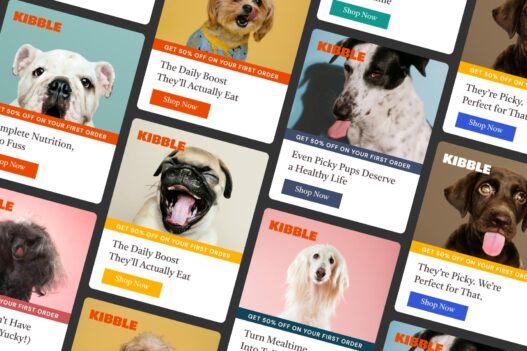Static advertisements, with their one-size-fits-all messaging, were once the core of marketing strategies across industries. But in a world driven by data, personalization, and rapidly shifting consumer behavior, static ads are no longer enough. Enter dynamic, responsive ad creative—an innovative approach to advertising that tailors ad content to users in real-time, delivering personalized messaging based on audience insights, context, and platforms.
For digital marketers, ad agencies, and forward-thinking business owners, this evolution offers not just a strategy shift but also new ways to engage audiences, improve performance, and future-proof campaigns. Adapting creative strategies to user behavior and platform diversity is no longer optional; it’s essential to staying competitive in today’s fragmented media landscape.
This blog will explore the transition from static to smart advertising, its technologies, benefits, and real-world applications. By the end, you’ll gain insights into how dynamic, responsive ads are reshaping the future of advertising.
1. The Limitations of Static Creative
Static ads, while foundational to the early days of digital advertising, are increasingly struggling to stay relevant in today’s fast-evolving digital ecosystem. These simple, unchanging formats often fail to capture the attention of modern audiences who are accustomed to dynamic, interactive, and personalized content. As a result, static ads face several inherent challenges that limit their effectiveness in engaging users and driving meaningful results.
One-Size-Fits-All Messaging
Static creative delivers the same message to every audience segment. While this worked for mass media campaigns, today’s audiences demand messages that resonate with their specific needs and preferences. The lack of personalization leaves users disengaged and unresponsive.
Poor Performance in a Fragmented Media Landscape
The digital space is crowded, with multiple platforms vying for consumer attention. Static ads miss the mark as they fail to adapt to the unique nuances of each platform, often leading to lower click-through rates (CTR) and conversions.
Inflexibility Across Audience Segments and Channels
Static formats lack the agility to address the varied demographic, psychographic, and behavioral differences within target audiences. This inability to connect with multiple audience segments hinders scalability and reduces ad effectiveness.
Static ads, while straightforward, just don’t cut it in our hyper-personalized digital ecosystem. It’s time for a more intelligent approach.
2. What Is Dynamic, Responsive Ad Creative?
Dynamic, responsive ad creative is an innovative solution designed to adapt ad content in real-time. It tailors messaging and visuals based on audience data, platform specifications, and contextual signals, ensuring a more relevant and engaging experience for the viewer. Unlike static creative, which remains fixed regardless of the audience or platform, these ads are fluid and personalized, adjusting to fit the preferences, behaviors, and needs of individual users. Additionally, they are platform-optimized, meaning the content is automatically tailored to suit the specific requirements of each digital channel, from social media feeds to display networks, maximizing effectiveness and campaign performance.
Definition
Dynamic creative leverages advanced technology, such as Dynamic Creative Optimization (DCO), to deliver tailored ad experiences. Ads adjust their visuals, copy, calls-to-action (CTAs), and even offers to align with the preferences and behaviors of individual users.
Examples of Dynamic Ad Creative
- Product Retargeting: Ads showcasing specific products a user browsed, complete with updated pricing or availability.
- Location-Based Offers: Promoting deals or stores tailored to a user’s geographical location.
- Personalized Messaging: Utilizing audience attributes like user demographics, browsing history, or purchasing behavior to craft highly relevant messages.
Dynamic ads transform what could have been generic campaigns into experiences that feel timely, relevant, and impactful.
3. Key Benefits of Going Dynamic
Increased Relevance and Engagement
Dynamic ads deliver content personalized to the viewer’s preferences or behavior, which increases engagement. Audiences are more likely to click on ads that feel specifically crafted for them.
Improved Campaign Performance
Dynamic creative consistently outperforms static ads in key performance metrics:
- CTR: Higher engagement rates due to personalized content.
- Conversions: Better alignment with user intent leads to more sales or leads.
- Return on Ad Spend (ROAS): Enhanced efficiency in targeting drives higher returns.
Greater Efficiency in Creative Production
Modular design systems and automation tools simplify the creation of multiple ad variations. Compared to building static ads for every scenario, dynamic creative reduces production time and resources.
Seamless Multichannel Consistency
Dynamic creative ensures that your messaging stays consistent across the user’s digital touchpoints while adapting to the nuances of each platform.
4. Technologies Powering the Shift
Dynamic Creative Optimization (DCO)
Platforms like Google Display & Video 360, Ad-Lib.io, and Flashtalking provide DCO capabilities, automating the generation of tailored ad content based on real-time data and targeting parameters.
AI and Machine Learning for Personalization
AI models analyze audience behavior, preferences, and contextual signals to predict which creative variation will perform best for specific users.
Real-Time Data Feeds and Programmatic Integration
Data feeds—from pricing information to inventory levels—allow dynamic ads to stay up-to-date. Programmatic technology ensures seamless integration into live digital campaigns.
These technologies are the backbone of the new era of hyper-relevant ad experiences.
5. Creative Strategy in a Dynamic World
Importance of Modular Design Systems
Dynamic creative thrives on modularity. Ad components, such as headlines, imagery, and CTAs, are designed as interchangeable elements, allowing endless combinations to suit varied scenarios.
Creating Variations with Intent
Focus on meaningful customization:
- Copy: Tailor messaging to the audience segment (e.g., families vs. solo travelers).
- Visuals: Select images or videos that resonate with the user’s interests or geography.
- CTAs: Experiment with action-driven language that speaks to user needs.
Testing and Iterating Creative
Dynamic campaigns are not “set and forget.” Use A/B testing to analyze which creative variations perform best, and optimize your ads mid-flight to maximize results.
6. Real-World Use Cases
E-Commerce
A retail clothing brand used dynamic ads to promote personalized product recommendations, such as “You might also like…” suggestions. The results? A 32% increase in conversions compared to static campaigns.
Travel
A travel company showcased location-specific offers based on user browsing data. For example, users searching for beach destinations were presented with tropical vacation deals, resulting in a 21% boost in CTR.
Consumer Packaged Goods (CPG)
A CPG brand integrated dynamic creative into its campaigns, highlighting seasonal promotions and personalized product combinations. This approach drove a 15% growth in ROAS.
These examples underline the potential of dynamic ads to deliver impactful results across industries.
The Road Ahead for Advertising
The age of static creative is rapidly giving way to a smarter, data-driven future. Brands that adopt dynamic, responsive ad creative stand to gain more than just improved campaign performance; they build deeper connections with their audiences through personalized, meaningful interactions.
Want to stay ahead in the competitive advertising landscape? Start exploring dynamic creative solutions today. Your smarter, more engaging campaigns await.
For more information on dynamic creative solutions and how they can transform your advertising strategy, contact us today. Our team is here to help you drive better results and connect with your audiences in powerful new ways.



















